 |
|
 |
|
|
|
|
|
|
|
|
|
|
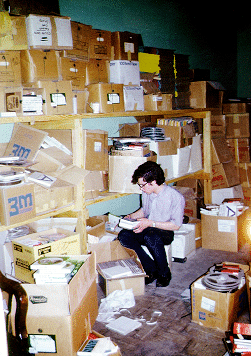
A picture is worth a thousand words, but this one deserves a personal explanation from your photo album tour guide, Jon Wolfert: "Before I began working at PAMS, I naturally thought that they would treasure their library of past productions as much as I did. But when I arrived there in 1971 I was introduced to reality. There was only so much space in the building, and when it ran out the older master and reference tapes were unceremoniously tossed into cartons and thrown haphazardly into this un-air conditioned storage room. During my first year at PAMS, I spent many weekends going through this gigantic mess and found countless items of historical interest which would otherwise have been destined for the trash can. (Whether they belonged there or not is left up to the reader.)"
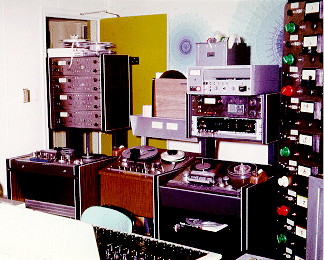
Backing up a few years, here's a look at Control Room A in 1967. Notice that all ten channels of the new "10 track" recorder were arranged vertically in one rack. Of particular interest is the presence of the "Cue Mat" machine, which is the rectangular unit sitting on top of the full track machine. This peculiar Ampex device was probably the world's first floppy disc drive (of sorts). It played discs of magnetic tape, about the same size as a record album. You can see the discs sticking out of the beige holder above the two-track machine. The discs cued up automatically, like carts, but required no re-cue time after playing. PAMS used this system to insert generic elements into syndicated jingles (such as the sonovox word "music" in series 31, and the "swiszle" sound effect and countdown numbers in series 32). Ampex thought this technology would replace cart machines, but only a few were actually sold partly because a disc would only hold about 3.5 minutes of audio.
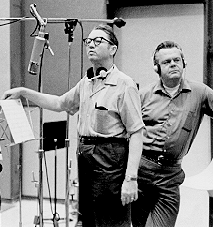
Billy Ainsworth (on the left) played saxophone as well as singing and producing many vocal sessions at PAMS. Jodie Lyons (right) was a singer and also a writer/arranger who was responsible for a wide variety of material ranging from portions of Series 27 all the way to "Solid Rock".
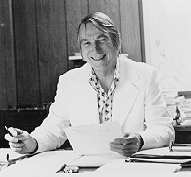
Ray Hurst played guitar and mallets (vibes, xylophone, etc.) in addition to writing many of the commercial jingles which PAMS did for retail clients and advertising agencies. In the mid-60s Ray also authored a novel method of guitar instruction called "Color Way" which was recorded at, and distributed by, PAMS.
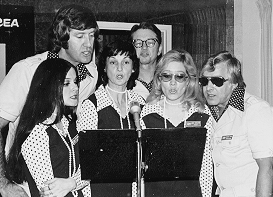
PAMS tried something a bit different to entertain visitors to its hospitality suite at the 1974 NAB convention in Houston. The vocal group performed live, singing along with pre-recorded music tracks. The cuts used were :60 commercials, whose lyrics had been customized for the occasion, or longer station jingles. The room was packed for every show. (left to right: Linda, Jim, Carol, Billy, Abby, and Marv).
Photos on this page by Jon Wolfert amd Ken Justiss. Rights to all photos are reserved by their respective owners.
|
|
|
|
|
|